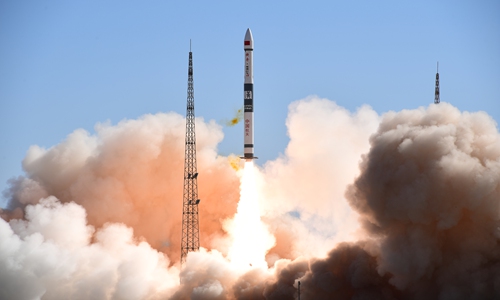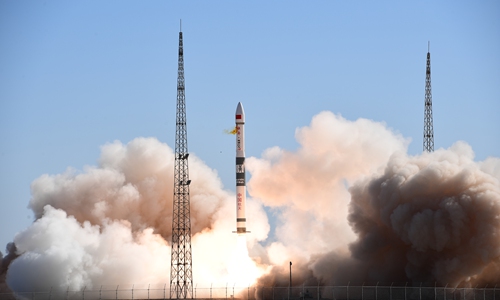 |
| Conceptual image of the Xingyun-2 satellites and network. Photo: Courtesy of CASIC |

China has successfully launched the first two communication satellites for its new space-based Internet-of-Things (IoT) project into designated orbit on Tuesday, with the first one named after its birthplace Wuhan, a city once hit hard by the COVID-19, according to China Aerospace Science and Industry Corporation (CASIC), the developer.
The two satellites were launched by the country's Kuaizhou-1A commercial carrier rocket, which was also developed by the Wuhan-based Sanjiang Group under the CASIC, on Tuesday from the Jiuquan Satellite Launch Center in Northwest China's Gansu Province.
The completion of the Tuesday's mission marks the beginning of China's new generation spaceborne IoT project, codenamed the "Xingyun Engineering" project.
"Xingyun" project is developed by CASIC with a network of 80 low-orbit communication satellites,
The satellites will be used to test applications in multiple fields, such as intelligent container monitoring, polar environmental monitoring, meteorological forecasting as well as marine transport communication, and lay a foundation for the following space-based IoT network.
 |
CASIC told the Global Times on Tuesday in a statement that the construction of an 80-satellite network will be completed by around 2023, and will provide a solution to current "communication blind spots."
IoT services have been strained by poor coverage of ground-based cellular communication networks that are effective by only 20 percent on the ground, and less than 5 percent at sea globally.
The Kuaizhou-1A carrier rocket that participated in the launch mission is also developed by CASIC, which is mainly used to launch 300-kilogram level satellites into lower orbits, and the solid propellant rocket model has successfully conducted 8 launch missions.
 |
| Conceptual image of the Xingyun-2 satellites and network. Photo: Courtesy of CASIC |
Conceptual image of the Xingyun-2 satellites and network. Photo: Courtesy of CASIC
Interestingly, the

